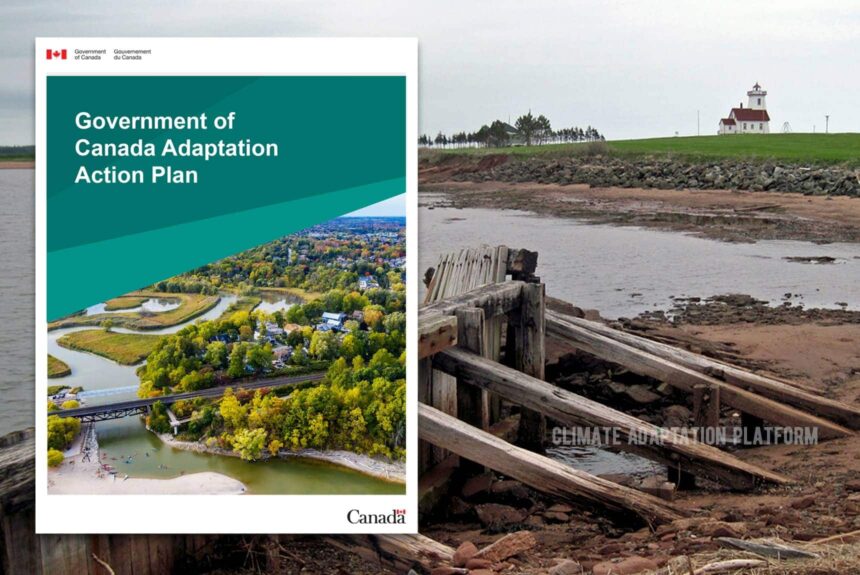Canada released its first national climate adaptation strategy on 24 November 2022 after two years of consulting with its provinces, territories, municipalities, and indigenous groups. The entities will now have 90 days to comment on the plan.
The plan includes CDN$1.6 billion over five years in new federal funding to protect communities against the increasing impacts of climate change.
The funding will help implement the five priority areas of the Strategy:
- improving health and well-being
- building and maintaining resilient public infrastructure
- protecting and restoring nature and biodiversity
- supporting the economy and workers
- reducing the impacts of climate-related disasters
According to the Canadian government website, climate change and extreme weather are already affecting Canadians’ lives across the country, such as:
- Hurricane Fiona battered Atlantic Provinces and Eastern Quebec in September 2022;
- Extreme heat waves and wildfires in British Columbia and Alberta;
- Droughts, crop losses in the prairies, and
- Catastrophic flooding in Ontario and Quebec.
Slow-onset events like permafrost thaw and rising sea levels are changing the landscape and threatening safety and livelihoods.
Adapting to climate change will be crucial to avoid devasting losses.
According to the report, The Canadian Climate Institute estimates that by 2025 Canada will experience annual losses of $25 billion because of climate change. This is 50% of the projected 2025 Gross Domestic Product (GDP) growth.
If left unchecked, damage and losses from climate change will undermine the country’s economic growth, according to Steven Guilbeault, Minister of Environment and Climate Change. Adding that for every dollar spent on adaptation measures will save up to $15, including both direct and indirect economy-wide benefits.
Critical actions under each National Adaptation Strategy system include:
- Taking action to enhance Canada’s emergency management and disaster risk reduction capabilities. Including investing up to $285 million over five years in wildfire research and establishing a Centre of Excellence for Wildland Fire Innovate and REsilience. And investing up to $164 for improving flood resilience by expanding the Flood Hazard Mapping.
- Taking action to protect the health and well-being of Canadians. Investing up to $30 million to protect its citizens from extreme heat and $13 million in creating climate-resilient health systems.
- Taking action to enhance a thriving natural environment. Implementing several conservation programs, including protecting 25% of Canada’s land and waters by 2025 and 30% by 2030.
- Taking action to enhance our resilient natural and built infrastructure. This includes topping up the Disaster Mitigation and Adaptation Fund by up to $489 million over ten years and $60 million to accelerate the update of climate-informed construction codes and guidelines for resilient infrastructure.
- Taking action to protect the economy and workers. Enhance the resilience of Canada’s supply chains and support industries like agriculture and mining to cope with climate change impacts and invest up to $41 million in a new Climate REslient Coastal and Northern Communities program to address barriers and develop new solutions to climate change risks.
- Building our knowledge and understanding of Canada’s changing climate. Undertaking state-of-the-art climate modelling and research and sharing this information with Canadians to help them make climate-informed decisions. Investing up to $70 million over five years to deliver a new Canada-wide climate science
assessment to provide new knowledge and data about ongoing and future climate change.
- Developing tools and resources to support communities in adapting. Including investing up to $530 million in the Green Municipal Fund to support at least 1400 community-based adaptation initiatives by 2030-31.
- Establishing governance and demonstrating leadership. Improving climate adaptation actions across society by bringing in the perspective of various groups – indigenous communities, marginalised, private sector, and civil society.
“The fight against climate change has reached our doorstep. We must not only reduce the emissions that cause climate change, but we must also adapt to the changes that are upon us,” federal Environment Minister Steven Guilbeault said in a statement.
Canada is the world’s fourth-largest oil producer and the second-highest carbon emitter among the Group of 20 major economies on a per capita basis, according to research from the Emissions Database for Global Atmospheric Research (EDGAR).
Read further details on the entire report by clicking on the links in the “Sources” section below.
Sources:
Thurton, D. & McKenna, K. (2022 24 November). Canada unveils new climate adaptation strategy with more than $1-billion commitment. CBC. Retrieved from https://www.cbc.ca/news/politics/climate-adaptation-canada-1.6661533
Canada’s National Adaptation Strategy: Building Resilient Communities and a Strong Economy. (2022, 30 November). Government of Canada. Retrieved from https://www.canada.ca/en/services/environment/weather/climatechange/climate-plan/national-adaptation-strategy.html
Government of Canada Adaptation Action Plan. (2022). Government of Canada. Retrieved from https://www.canada.ca/content/dam/eccc/documents/pdf/climate-change/climate-plan/national-adaptation-strategy/GCAAP-Report-EN.pdf
Williams, N. (2022, 25 November). Canada to invest C$1.6 bln in first national climate adaptation strategy. Reuters. Retrieved from https://www.reuters.com/business/cop/canada-invest-c16-bln-first-national-climate-adaptation-strategy-2022-11-24/



Leave a Reply